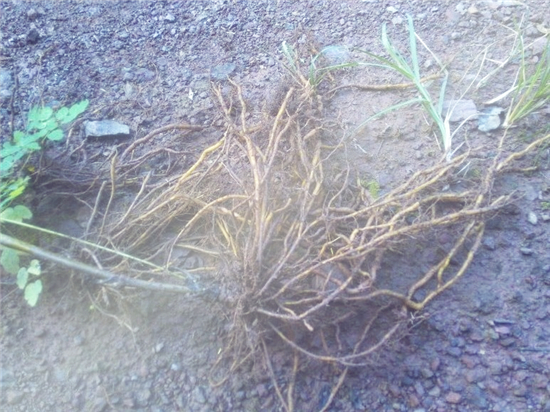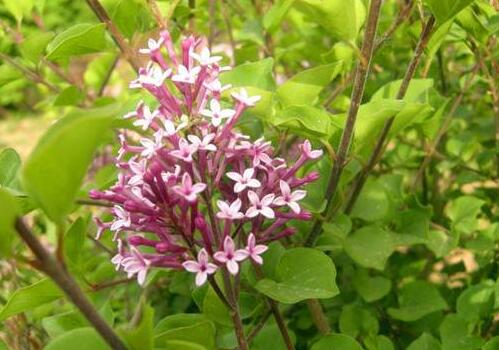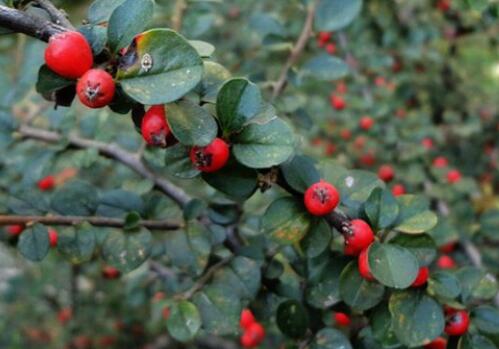How much is the market price of perennial herb Coptis chinensis per jin? How much do you earn from planting an acre? How do you plant it?
Coptis chinensis, also known as Rhizoma Coptidis, Rhizoma Chuanlian, and Rhizoma Coptidis, is a common perennial herb in China. It is widely used as medicine because it has the effect of clearing heat and dryness, purging fire and detoxification. How much is the market price of Coptis chinensis? How much do you earn from planting an acre? How do you plant it?

Latest price:
The market price of Coptis chinensis is about 60-90 yuan per jin, but it varies greatly due to variety, origin, quality, market and so on. So if you want to buy, you can go to the local inquiry.
Analysis of planting benefit of Coptis chinensis
In the next five years, Coptis chinensis will be planted on an area of about 50, 000 mu, with a total production capacity of about 9000 tons, with an average annual output of 1800 tons, which is significantly lower than the annual demand of about 3500 tons.
If according to the current price, the estimated output value is 900 million yuan (180 kg per unit, 50,000 mu, 100 yuan). However, labor costs and planting risks remain high, even in the current market, Shizhu local enthusiasm for the production of Coptis chinensis has not been fully raised.
Although the current market trading volume of Huanglian is on the rise, the inventory is still not small. This year, many farmers have dug Coptis chinensis in 4, 5 and 6 years, and it is expected that the number of Coptis chinensis listed on the market will gradually shrink next year.
Planting techniques:
First, select the woodland
Be sure to choose woodland with greater shade. Sijiqing, which has no deciduous leaves all the year round, is the most ideal tree species in the natural forest, and it is suitable for dwarf trees with a height of about 3.3 meters. The artificial fir woodland has a continuous crown, a height of about 3.3 meters, and a slope of 200 to 25. Between. It is better to choose the soil with deep humus, rich in organic matter, upper loose and lower fruit.
2. Tidying up the shed
For natural forests, all dead branches, small trees and thatch should be cut off, shrubs and dwarf trees should be left, and twigs below 2 meters from the ground should be trimmed, and the shade should be kept at 70% to 80%. For artificial Chinese fir forest, young woodland should be selected to basically reach the connection of branches. In some places, if there is a skylight, just use branches around Coptis chinensis to play a sunshade role.
III. Land preparation and harmony
Before preparing the soil, remove the residual branches, fallen leaves and stones from the topsoil out of the forest, remove the bamboo roots, small roots and thatch roots from the forest, and avoid digging deeply. As for the man-made fir forest, as long as you dig it once, those who lack soil around the tree need to cultivate soil. Then open a straight trench from top to bottom, 23 cm wide and 10 cm deep, and the soil on the bottom of the ditch is lifted to sleep on both sides.
IV. Transplanting
Coptis chinensis seedlings planted under the forest should have more than 12 leaves for 2 years. Transplanting time, if evergreen, coniferous woodland, Ching Ming Festival can start planting, broad-leaved forest land to wait for new leaves to grow after planting.
V. Field management
(1) weeding and topdressing good noodles are always weed-free, so that they can be removed early and small. Nitrogen fertilizer was mainly applied in the first and second year after planting. In the later stage, phosphorus bait fertilizer was mainly applied.
(2) after the Coptis chinensis seedlings survived, spread a thin layer of cake and cypress fertilizer of 375 kg per hectare on the top of the noodles, and sprinkled some fine soil on the frogs in combination with cow and horse dung after autumn, and in the following years, each summer and autumn, according to its situation, apply mud to cultivate the soil layer.
(3) pick up the withered branches and leaves that will fall in autumn and spring, pick them to the middle of the line of Coptis chinensis, and sprinkle them with a little soil.
(4) the light transmission is only 20% 25% in the first year, 35% 40% in the second and third year, about 60% in the fourth year, and all in the fifth year. In the first 2023, part of the branches should be cut off, and the number of branches should be increased in the fourth year. For the natural forest, some leaves should be knocked off or the branches and leaves should be tied up with vines to increase the luminosity in the forest. Human cultured Chinese fir forest can carry out proper thinning and pruning, and the thinning time should be carried out when the tree stops growing and Coptis chinensis has not sprouted, and it is generally appropriate in winter.
Time: 2019-03-18 Click:
- Prev

When are the flowers planted and when do they bloom? How much does a seedling cost? What are the planting methods?
Syringa microphylla, also known as four seasons Syringa, Erdumei, wild Syringa, mainly distributed in North China, Northeast China, Northwest China and the Yangtze River Basin. When will the flowers bloom and grow? How much does a seedling cost? What are the planting methods? I learned from Suqian seedling base
- Next

How much is the price of semi-evergreen Pingzhi wolfberry seedlings? Can the fruit be eaten? How do you trim it? How to plant bonsai
Pingzhi wolfberry generally refers to Pingzhizi, born in hillsides, ridges, thickets or rock crevices above 1000 meters above sea level. The flowering period is from May to June and the fruiting period is from September to October. So how much is the price of Pingzhi wolfberry seedlings? Can the fruit be eaten? How do you trim it? How to plant and maintain bonsai? Learned from Shuyang Seedling Company
Related
- Fuxing push coffee new agricultural production and marketing class: lack of small-scale processing plants
- Jujube rice field leisure farm deep ploughing Yilan for five years to create a space for organic food and play
- Nongyu Farm-A trial of organic papaya for brave women with advanced technology
- Four points for attention in the prevention and control of diseases and insect pests of edible fungi
- How to add nutrient solution to Edible Fungi
- Is there any good way to control edible fungus mites?
- Open Inoculation Technology of Edible Fungi
- Is there any clever way to use fertilizer for edible fungus in winter?
- What agents are used to kill the pathogens of edible fungi in the mushroom shed?
- Rapid drying of Edible Fungi

